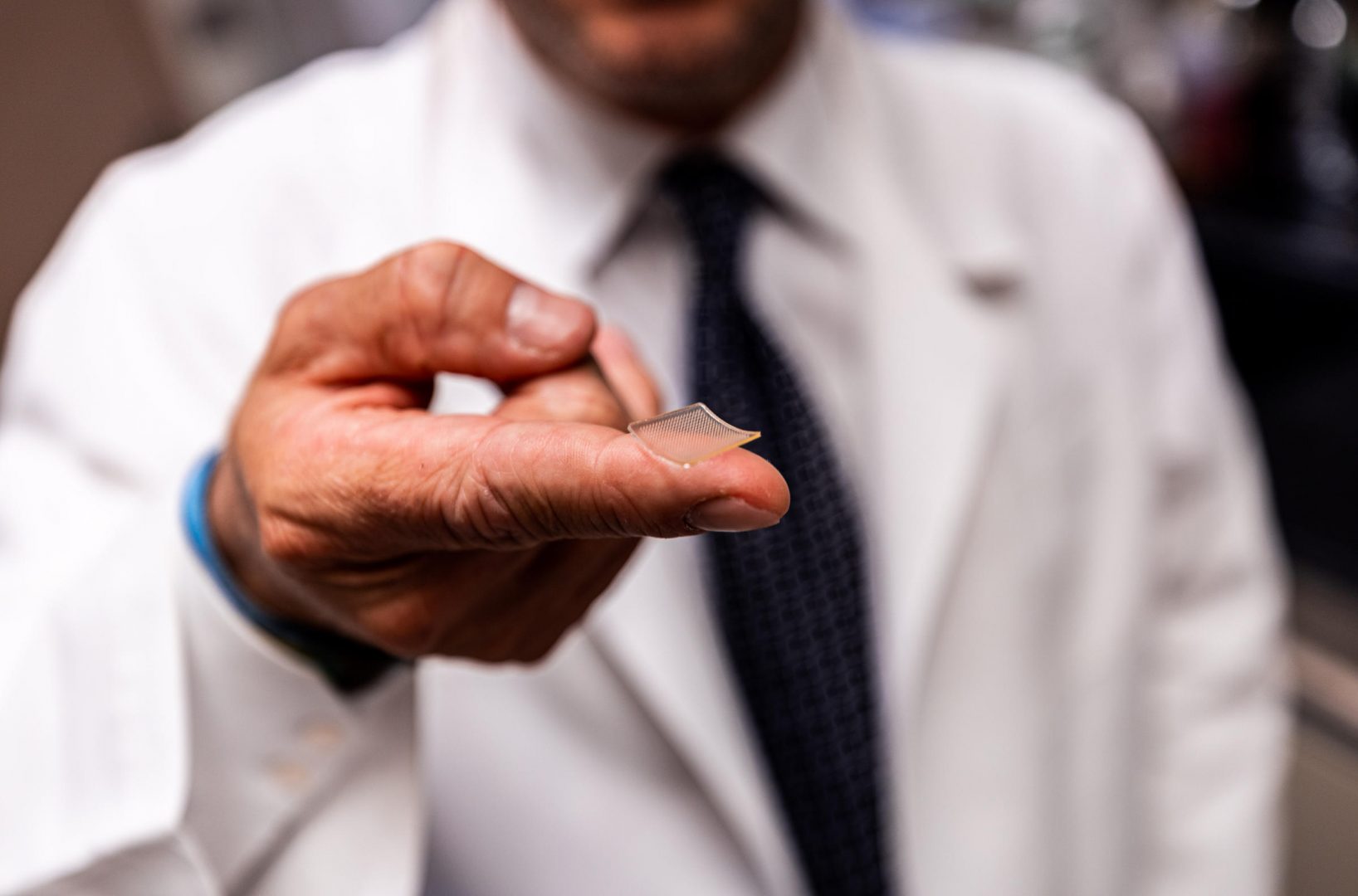
A look at the "microneedle array" that could deliver a coronavirus vaccine being developed by University of Pittsburgh researchers
UPMC

A look at the "microneedle array" that could deliver a coronavirus vaccine being developed by University of Pittsburgh researchers
UPMC

UPMC
A look at the "microneedle array" that could deliver a coronavirus vaccine being developed by University of Pittsburgh researchers
What you should know
» Coronavirus facts & FAQ
» Map: Confirmed cases in the U.S. and around the world
» How to prepare your home for coronavirus
The University of Pittsburgh’s School of Medicine says it has developed a promising potential vaccine against the virus driving the global COVID-19 pandemic.
Researchers say that in tests on mice, the vaccine produced sufficient antibodies to fend off the virus. They hope to begin human testing soon.
“We are able to start the [human] trial as soon as we have regulatory approval,” said Dr. Louis Falo, a professor and chair of dermatology who co-authored a paper published today on the early findings, at a Thursday-morning press conference. Initial trials, he said, would involve “healthy volunteers in the Pittsburgh area” who would be giving varying amounts of the vaccine to test for optimal dosage.
The vaccine uses the coronavirus’ “protein spike” — which allows the virus to attach itself to and infect cells — against it. “Our goal is to use a piece of that spike protein so that we are able to induce antibody responses” that will resist the virus, Falo said.
“Our next steps include beginning a clinical trial,” Falo said. “This process normally takes months to years, but these pandemic conditions are not normal.”
The long-term effect on the mice has yet to be determined yet, so it is difficult to know, for example, how long the immunity conferred by the vaccine will last. Nor is it certain that the vaccine will work as well on humans.
But Dr. Andrea Gambotto, a Pitt associate professor of surgery, worked on developing vaccines to treat two earlier outbreaks of related coronaviruses — the SARS virus in 2003 and MERSA a decade later. In both cases, he said, the viruses petered out before the vaccine could be fully developed. But the new coronavirus has genetic characteristics that are similar to the earlier viruses, and Gambotto said a similar approach should work.
“We have selected this vaccine format because we believe that this is one of the best and easy-to-translate candidates [for a] vaccine,” he said.
The coronavirus is notoriously transmissible and has spread rapidly from China to countries around the world in just a few months. It has also proven itself to be far more deadly than the flu. An estimated 941,000 people worldwide have been infected by the virus, which has caused nearly 50,000 deaths.
Efforts to develop a vaccine have been intense, with researchers around the world racing against the spread of the virus – and against each other. Already dozens of potential vaccines are under development, and a human trial of another vaccine began in Seattle last month.
But Pitt researchers say their vaccine differs from the Seattle approach in a few ways. While the Seattle virus makes use of genetic material known as messenger RNA, Pitt’s vaccine relies on what it calls a “more established approach” that draws on proteins made in the lab. That’s how traditional flu vaccines are made.
Pitt’s approach to delivering the vaccine, however, is more unusual. The vaccine is administered through a small patch, not unlike a plastic bandage, in which some 400 tiny “needles” made of sugar and the proteins dissolve into the skin. Falo described the new approach as “pretty painless – it feels kind of like Velcro.” And at the press conference, he said it provided a number of advantages.
For one thing, he said it would require smaller amounts of antigen than a typical shot, which reduces the risk of adverse reactions and means more doses could be made. Using relatively simple equipment, he said, one person could make hundreds of the vaccines a day, and they would not need refrigeration, which makes transport easy.
“We will be able to ramp up production… very quickly because of the straightforward technology that’s involved, and because of the requirements of much lower doses of antigen,” Falo said.
Falo envisioned a vaccine manufacturing facility being capable of “making millions of these vaccines at a rapid rate.” But, he said, “We haven’t gotten there yet.”

Get insights into WITF’s newsroom and an invitation to join in the pursuit of trustworthy journalism.
The days of journalism’s one-way street of simply producing stories for the public have long been over. Now, it’s time to find better ways to interact with you and ensure we meet your high standards of what a credible media organization should be.